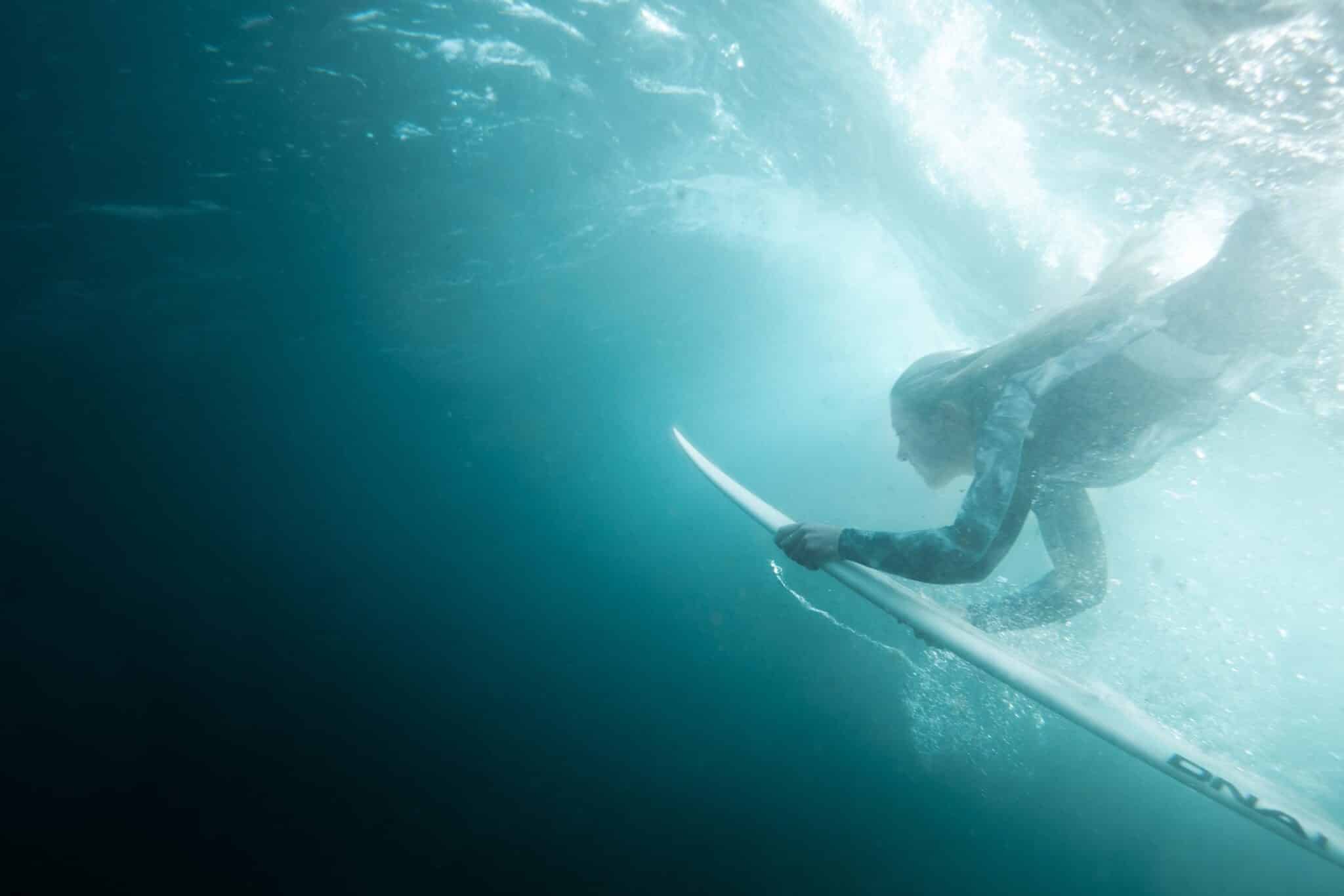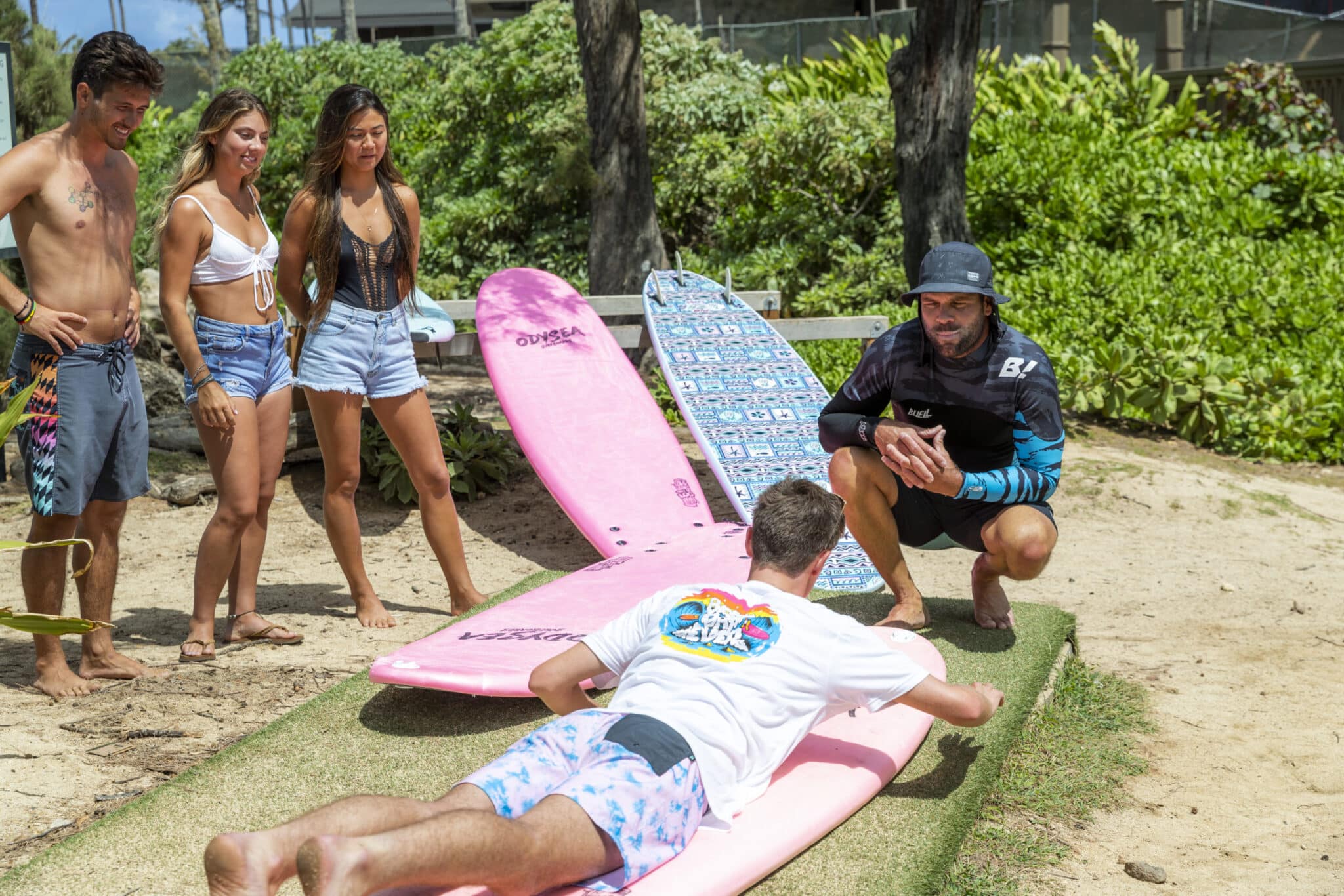
Navigating the lineup on bigger days can be tricky, even for experienced surfers. When the surf is a bit more powerful than you’re used to, paddling out becomes exponentially more difficult if you don’t know how to turtle roll or duck dive. For those who don’t know, turtle rolling and duck diving are ways surfers dive under crashing waves to avoid being washed to shore. Longboarders turtle roll their boards, while shorboarders can dive underneath the wave with their boards. Both turtle rolling and duck diving are essential skills that every surfer should master. In addition to helping you paddle out to the lineup with relative ease, these skills keep you and the surfers around you safe. To find out how to duck dive and turtle roll, continue reading below.
Duck Dive vs. Turtle Roll
The main discerning factor in deciding whether you should duck dive or turtle roll is your board’s size. When we duck dive, we use our body weight to submerge the board and then pull ourselves underwater with it, so that the wave can pass safely overhead. If you’re riding a longboard, a mid-length, or a soft top, it’s highly unlikely you will be able to fully sink the board with just your bodyweight. So, duck diving is typically reserved for shortboards.
How to Turtle Roll

We turtle roll when an approaching crashing wave is too powerful to simply paddle through. We turtle roll for two reasons, to get under powerful surf and to stay in control of our board.
-
Entering the water
When learning how to duck dive or turtle roll, the first step is always to enter the water safely. Walk into the water and lead your board, holding it by the nose under your arm. Wait until you’re in approximately chest-deep water to begin paddling.
-
Spot the wave and roll
When a breaking wave is 6 feet in front of you (2 meters), flip upside down with your board held securely above you on the surface of the water. Keep the board pointed directly at the breaking wave with your arms slightly bent.
-
Let the wave pass & continue paddling
Once the wave has passed safely overhead, flip the board over by pulling with one hand on the rail and pushing with the other. You can also kick your legs to help you get back on your board to resume paddling.
How to Duck Dive

When learning how to duck dive, it’s easy to take shortcuts and simply try to muscle the board underwater. Failing to duck dive properly will only make your paddle out harder. So, it’s important to take the time to master the basics.
-
Gain momentum
To duck dive, you’ll need forward momentum. As the wave is approaching, paddle towards it at a moderate pace with your board facing directly at the oncoming surf.
-
Spot the wave and dive
When the approaching wave is 6 feet in front of you (2 meters), place your hands on the rails (sides) of your surfboard just under your chest and extend your arms to press the nose of the board underwater.
-
Use your foot
When your arms are fully extended, take your front foot and place it on the tail of the board (use the traction pad if you have one). Extend your leg and submerge the board with your body weight. As you extend your leg, your body should make the shape of an upside triangle.
-
Hold your breath and pull
Once the nose and tail of the board are completely submerged, take a deep breath and pull yourself towards the board underwater. When your chest is flush against your board underwater, the wave can pass safely overhead.
-
Surface and paddle
As the wave passes overhead, you will start to naturally rise on the other side of it. When you surface, center yourself on your board and begin to paddle out to the lineup.

Learning how to duck dive and turtle roll is essential for every surfer to stay safe in the lineup. When you visit our North Shore Surf School, we will go over the basics of paddling out on the shore before heading into the water. To stay close to the action on the North Shore, book a room at Turtle Bay Resort. Stay tuned to the JOB Surf Experience blog for more surf tips and North Shore news!
